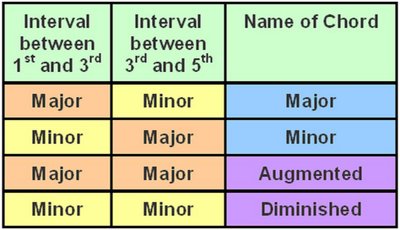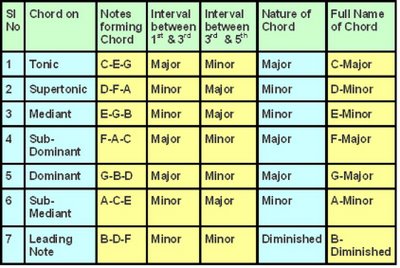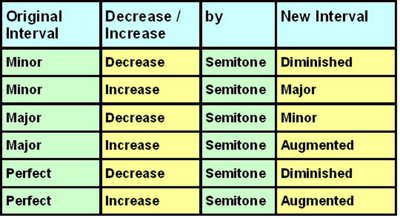Let us start with our first encounter with
Chords!
As I promised, I always want to make the matter simpler….!
One step in that direction is to use only the scale of
C-Major or
A-Minor in our preliminary discussions …. !
For simplicity sake….. because……… as you know, these scales use only pure white notes and do not involve “accidentals” such as sharps and flats…!(of course you know, A-minor Scale anyhow will use the sharp in leading note ….!)
Once the basics are understood, you can apply the same principle to any Major scales or Minor scales with flats or sharps…!
Another problem is of our internet posting which has constraints of tabulating and picture embedding…etc.
So, I may adopt the method of explaining the vertical chords with horizontal writing and you have to bear with that…! You can re-write them in a scoresheet and study further…!
For example the Chord of C which is C, E, G which are coming one over another, I may write as C-E-G and so on. …!
(Of course, I will use the tabulation of rows and columns also to give better effect, wherever possible)
What is a Chord …?
Many of you who have heard that terms from various musical discussions or otherwise, immediately associate the Guitar and strumming of its strings with the name Chords …!
OK…. You have some idea…!
But I want to explain the definition of Chords in general term as
“Playing more than one note at a time in any instrument ........ or......... Singing more than one note at a time! “In general, as per WCM, Considering a particular scale, taking any note as the first note,
basic Chords are formed when the notes of First, Third and Fifth are played together.
For example, in case of C-Major, considering the note D, the chords are formed when we play the notes D-F-A together.
The point to be noted is, these notes shall be the part of the scale we are considering…! (
for example in case of G-Major, it will be D-F#-A, since G-Major is using F#, as we know)
Such Chord formed by 3 notes of ( 1st+3rd+5th ) is called a Triad….! Hereafter, we will continue our discussions on Chords formed by three notes only, which are all triads..!
Now, as usual, naming conventions is what we shall know about….!
Similar to the interval names, the name of Chords also have two important ingredients…!
First one is the letter….( like C, D etc)…! This is selected as the letter on which the Chord construction starts. …! For example, in case of Chord formed by notes D-F-A, we select the letter D, which is the note on which the other two notes F and A are added to form the chord !
Second one is title, which expresses its quality … like, major, minor, augmented, diminished etc…. (which are similar to the name of the intervals)…!
But, you might have already noticed,
a triad is formed with two intervals built one over another…
ie…interval between 1st and 3rd notes and the interval between 3rd and 5th notes!
So
both the intervals put together determine the name of the chord…!
For naming of traids, the following conventions are followed :

In case of our Triad example D-F-A,
the interval between D and F is .....Minor..
and the interval between F and A is .....Major…!
So the chord is to be named as D-Minor…!
(The above example itself gives the hint to you, that a
Major scale can have certain Minor Chords also and vice versa….)
So, now onwards be careful in realizing the terms like Major Scale, Major Interval and Major Chords etc… we are talking about three entirely different entities…!
The collection of three notes together forming chord…can be done on any note taking that as starting note…!
So naturally, any scale which has 7 notes can have corresponding 7 chords/ triads also…! Isn’t it..!
We can name those seven Triads of Major scale as well as Minor Scale… In our next session…!
In the meanwhile, you can also have a try on that…. taking the C-Major and A-Minor as our model scales…! And as usual my request to you is, to play and feel those chords…!









